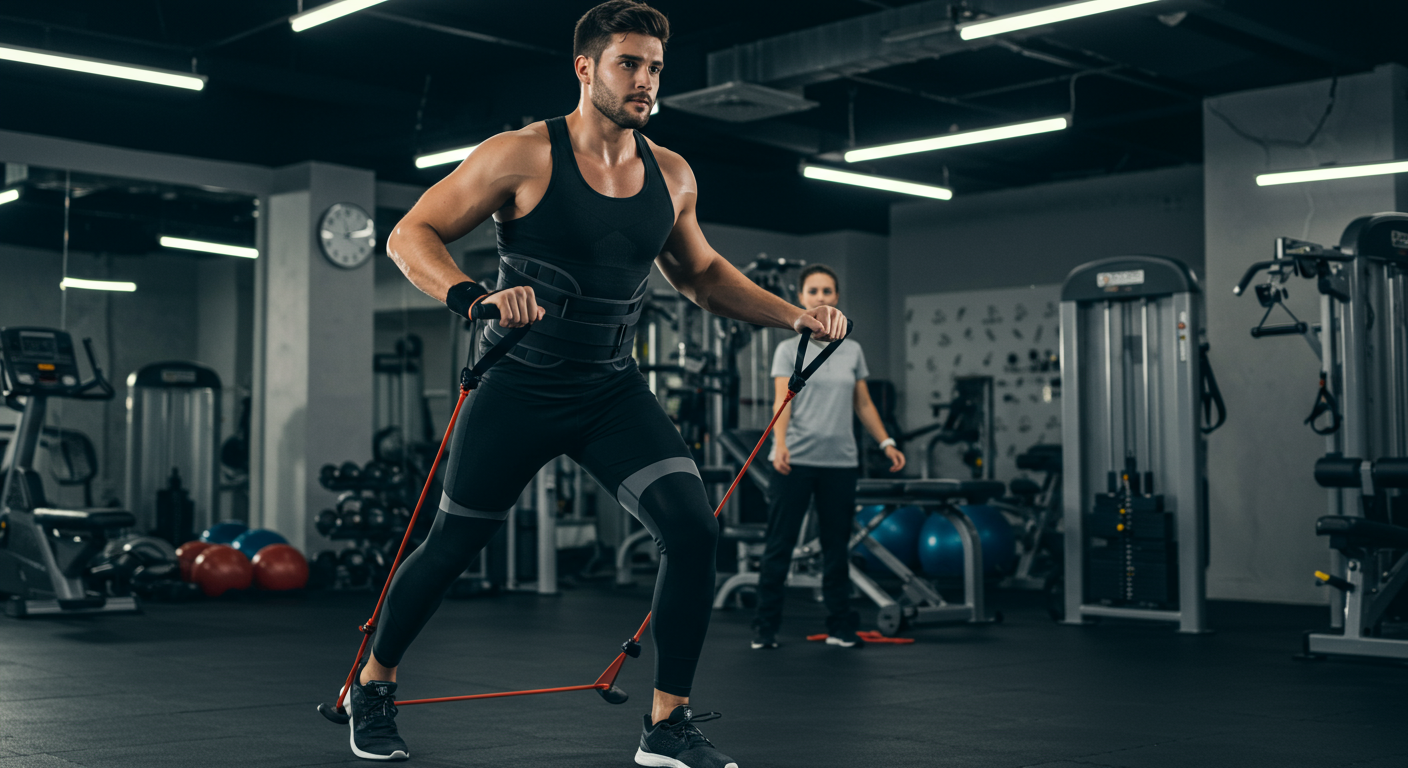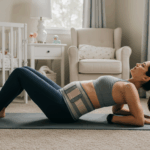Understanding Athletic Core Injuries
Athletic core injury, commonly called a sports hernia, is a painful soft tissue injury that occurs in the groin area. Despite its name, it’s not a true hernia as there’s no protrusion of abdominal contents through the muscle wall.
What Makes It Different
Unlike traditional hernias, sports hernias involve:
- Tear or strain in muscles, tendons, or ligaments
- No visible bulge or protrusion
- Pain that’s activity-related
- Complex involvement of multiple structures
- Gradual onset in most cases
Anatomy and Mechanism
Affected Structures
- Rectus abdominis insertion
- External oblique aponeurosis
- Conjoint tendon
- Inguinal ligament
- Adductor muscle origins
How It Happens
Sports hernias typically result from:
- Repetitive twisting and turning movements
- Sudden direction changes
- Forceful hip movements
- Imbalance between hip and core strength
- Overuse without adequate recovery
Common in These Sports
High-Risk Activities
- Soccer – Kicking and cutting movements
- Hockey – Skating mechanics and stick handling
- Football – Explosive movements and contact
- Tennis – Rotational serving and hitting
- Running – Especially with poor mechanics
- Baseball – Pitching and batting rotations
Recognizing the Symptoms
Primary Symptoms
- Deep groin pain during sports
- Pain with sit-ups or crunches
- Discomfort with coughing or sneezing
- One-sided pain (though can be bilateral)
- Pain that improves with rest
- Morning stiffness in groin area
Progressive Symptoms
- Pain spreading to inner thigh
- Testicular pain in males
- Lower abdominal discomfort
- Difficulty with explosive movements
- Pain during sexual activity
Diagnosis Challenges
Why It’s Often Missed
- No visible bulge like traditional hernias
- Symptoms mimic other conditions
- Standard imaging may appear normal
- Requires specialized examination
- Often diagnosed by exclusion
Diagnostic Tools
- Clinical examination by sports medicine specialist
- MRI with specific protocols
- Ultrasound during dynamic movements
- Diagnostic injections to isolate pain source
The Role of Compression Support
How Abdominal Support Helps
- Stabilizes the pelvis during movement
- Reduces stress on injured tissues
- Provides proprioceptive feedback
- Limits painful movements
- Supports gradual return to activity
When to Use Support
- During rehabilitation exercises
- Early return to sport phases
- High-risk training sessions
- Competition periods
- Preventive use in susceptible athletes
Treatment Approaches
Conservative Management (6-8 weeks)
Week 1-2: Rest Phase
- Complete rest from aggravating activities
- Ice therapy for pain management
- Compression support for daily activities
- Anti-inflammatory medications as directed
Week 3-4: Early Rehabilitation
- Gentle core activation exercises
- Hip flexibility work
- Soft tissue mobilization
- Continue compression support
Week 5-6: Progressive Loading
- Sport-specific movement patterns
- Gradual strength building
- Balance and proprioception work
- Modified training with support
Week 7-8: Return to Sport Preparation
- Full strength training
- Plyometric exercises
- Sport simulation drills
- Selective use of support
When Surgery Is Considered
- Failed conservative treatment (3-6 months)
- Significant tear on imaging
- Unable to return to sport
- Chronic pain affecting daily life
Rehabilitation Protocol
Phase 1: Foundation (Weeks 1-3)
Goals:
- Reduce pain and inflammation
- Maintain fitness without aggravation
- Begin gentle activation
Exercises:
- Transverse abdominis activation
- Pelvic tilts
- Gentle hip mobility
- Upper body and contralateral leg work
Phase 2: Strengthening (Weeks 4-6)
Goals:
- Progressive core strengthening
- Address muscle imbalances
- Improve movement patterns
Exercises:
- Bridge progressions
- Modified planks
- Hip strengthening
- Rotational control drills
Phase 3: Sport-Specific (Weeks 7-10)
Goals:
- Return to sport movements
- Build explosive power
- Prevent recurrence
Exercises:
- Medicine ball rotations
- Agility ladder drills
- Sport-specific patterns
- Plyometric progressions
Prevention Strategies
Training Modifications
- Proper warm-up protocols
- Core stability program
- Hip flexibility maintenance
- Balanced training loads
- Adequate recovery time
Biomechanical Factors
- Running gait analysis
- Sport technique assessment
- Equipment evaluation
- Surface considerations
Risk Factor Management
- Address muscle imbalances
- Maintain hip mobility
- Progressive loading principles
- Cross-training variety
Using Abdominal Binders Effectively
Selection Criteria
- Lower abdominal coverage – Focus on groin region
- Adjustable compression – Customize for activity
- Flexible material – Allow athletic movements
- Moisture-wicking – Manage perspiration
- Low profile – Fit under uniforms
Wearing Protocol
During Rehabilitation:
- All day wear in acute phase
- During exercises and activities
- Gradually reduce dependence
Return to Sport:
- During practice sessions
- High-risk activities
- Competition if needed
- Preventive use as appropriate
Long-term Outlook
Success Rates
- Conservative treatment: 80-90% success with compliance
- Surgical outcomes: 85-95% return to sport
- Recurrence rates: 10-15% with proper rehab
- Prevention effectiveness: High with proper program
Keys to Success
- Early recognition and treatment
- Adherence to rehabilitation protocol
- Gradual return to sport
- Ongoing prevention strategies
- Appropriate use of support
When to Seek Help
Red Flags
- Severe, sudden pain
- Visible bulge development
- Numbness or tingling
- Fever or systemic symptoms
- Pain at rest increasing
Healthcare Team
- Sports medicine physician
- Physical therapist
- Athletic trainer
- Surgeon (if needed)
- Strength coach
Conclusion
Athletic core injuries require patience and proper management for successful recovery. Abdominal support plays a valuable role in both treatment and prevention, providing stability during the healing process and confidence during return to sport. Combined with comprehensive rehabilitation and training modifications, most athletes can return to their previous level of performance.
Remember: Early intervention leads to better outcomes. Don’t ignore persistent groin pain – seek evaluation from a sports medicine professional familiar with athletic core injuries.




